
Mo
y
es Delta Gliders Pt
y
. Ltd. Version 1.01
SONIC
owners manua
l


SONIC OWNERS MANUAL
Version 1.01 1
CONTENTS
Amendments.........................................................................................2
Introduction...........................................................................................3
Description of Design............................................................................4
Specifications........................................................................................5
Operating Limitations............................................................................6
Disclaimer.............................................................................................7
Assembly Procedures...........................................................................8
Pre-Flight Check.................................................................................11
De-Rigging the Sonic..........................................................................13
Flying the Moyes Sonic.......................................................................16
General Tuning Hints..........................................................................20
Glider Care.........................................................................................23
Maintenance Schedule.......................................................................26
Checking The Sonic Stability System.................................................27
AN Bolt Index......................................................................................28
Bolts List.............................................................................................28
Purchase Record................................................................................29
Maintenance Log................................................................................29

SONIC OWNERS MANUAL
2 Version 1.01
AMENDMENTS
Version Date Chan
g
es
1.00 10/03/2004 Updated owners manual to new format
1.01 8/02/2007 Updated bolt list to show the difference between the KEEL /
CONTROL BAR /(''A'' FRAME) bolt for round and aero uprights.

SONIC OWNERS MANUAL
Version 1.01 3
Moyes Delta Gliders Pty. Ltd.
1144 Botan
y
Road, Botan
y
NSW 2019 Australia T: +61
(
0
)
2 9316-4644 F: +61
(
0
)
2 9316-8488 E: mo
y
es
@
mo
y
es.com.au
INTRODUCTION
Thank you for choosing your Moyes Sonic. You have made a wise choice as this intermediate
glider epitomises all the qualities of safety, performance, and handling that is the Moyes
tradition.
The development of the Sonic is indicative of the dedication of the Moyes design team who
strive to offer a range of high quality hang gliders for ALL pilots.
The flying traits of the Sonic can be summed up in one word - EASY ! !
EASY to launch because the glider with its positive handling at lower air speeds gives
maximum control and safety.
EASY to fly due to light handling and an amazing glide and speed range. The quicker roll
response and incredible sink rate make for easy thermalling and that will consistently leave you
at the top of the stack.
EASY to land, due to a very low stall speed and excellent flare authority across the full
recommenced wing loading range.
Please read this manual thoroughly, familiarise yourself with the set-up and breakdown
procedures, and take the time to practice these before venturing out to your site. Carefully
study the section on Flying Your Sonic and remember, for your first flight choose a mellow day
at a familiar site and ease yourself into one of the most enjoyable flights of your life.
Make sure you follow all appropriate procedures every time you fly. Never take anything for
granted in the sport of hang gliding. If in doubt about any aspect of operating your new Sonic,
consult your manual or seek advice from your Moyes dealer.
The Sonic is designed for the advancing pilot and the Birdmen from down under are happy to
help with advice and hints that will not only make flying your Sonic safer and more enjoyable,
but to help you achieve your full potential in the sport of hang gliding.
Since 1967, Moyes Delta Gliders has strived to be on the cutting edge of developing hang
gliders of the highest calibre. A family-owned business operating under homespun values, we
aim to provide a comprehensive international network to service all pilots. Even further, we
work with some of the best pilots in the world to ensure that our gliders are stringently made
and tested in order to improve their performance handling, and safety.
We wish you the very best flying,
The Moyes Team

SONIC OWNERS MANUAL
4 Version 1.01
DESCRIPTION OF DESIGN
The Moyes Sonic, crafted with double surface and internal floating crossbar, is a
combination of state of the art design features and materials, and high quality
manufacturing standards, resulting in a uniquely high performing yet easy to fly flex wing
hang glider.
The cut of the sail has been carefully crafted to determine a controlled twist distribution
with a perfect match to the leading edge curve, giving flutter free performance
throughout the speed range. The use of high quality Dacron, reinforced tip panels,
streamlined nose fairing and a zippered inspection port giving access to the crossbar
assemblies are features that set this sail at the top of its class.
A large Mylar-reinforced leading edge pocket and closer batten spacing gives the high
camber wing a solid, distortion free airfoil for maximum lift and cleaner airflow at speed.
With the combination of stainless steel reflex bridles and composite alloy/fibreglass
battens, the Sonic displays excellent pitch stability and dive recovery. However, it is
important to understand that any alteration of bridle dimensions or batten profile may
reduce the glider’s pitch positiveness.
The overall structural integrity of the Sonic is of the usual Moyes robust standard while
the airframe geometry still allows for both on-frame and flat assembly as this situation
requires.
The Moyes Sonic meets or exceeds all U.S.H.G.M.A. airworthiness standards.

SONIC OWNERS MANUAL
Version 1.01 5
SPECIFICATIONS
Model Size Sonic 165 Sonic 190
Area 15.3 sq m
165 sq ft 17.7 sq m
190 sq ft
Span 9.1 m
29.9 ft 9.4 m
31 ft
Nose Angle 120 degrees 120 degrees
Aspect Ratio 5.4 5.1
Glider Weight 26 kg
57 lb 29 kg
64 lb
Optimal Pilot Weight 75 kg
165 lb 90 kg
198 lb
Hook-In-Weight 54-100 kg
120-220 lb 73-109 kg
160-240 lb
Packed-Length 5540 mm
18.2 ft 6400 mm
21 ft
Short-Packed Length 3920 mm
12.9 ft 4260 mm
14 ft
C of G Front of Keel 1640 mm
64.6 inches 1680 mm
66.1 inches
Number of Battens:
Mainsail
Undersurface
15
4
17
6
VNE 74kph
46mph 74kph
46mph
VA 69kph
43mph 69kph
43mph
Trim Speed 32kph
20mph 32kph
20mph
Stall Speed 24kph
15mph 23kph
14mph
Max Speed 72kph
45mph 72kph
45mph
Best Glide Speed 43kph
27mph 43kph
27mph
Best Glide Angle 9:1 9:1

SONIC OWNERS MANUAL
6 Version 1.01
OPERATING LIMITATIONS
The Sonic has been tested and found to comply with current U.S.H.G.M.A Airworthiness
Requirements. These standards require static aerodynamic load testing:
• with a positive 30° angle of attack at 65 mph;
• with a negative 30° angle of attack at 46 mph;
• with a negative 150° angle of attack at 32 mph; and,
• Pitching moment tests at 20, 35 and 50 mph to display the gliders inherent
positive pitch stability through a broad range of angles of attack.
In-flight testing has shown the Sonic to be safely controllable throughout the complete
range of usual operating conditions. The Sonic is capable of spins (which is not an
approved manoeuvre), but is inherently resistant to them.
The Sonic has been designed for foot-launched gliding or soaring flight with the following
limitations:
Flight operations must be restricted to non-aerobatic manoeuvres.
The glider must not:
• be flown by more than one person;
• exceed 30 degrees nose up or down to the horizon;
• exceed 60 degrees bank angle to the horizon;
• be flown in excess of V.N.E. of 46 mph;
• be flown inverted or backwards;
• be flown with auxiliary power without the approval of Moyes Delta Gliders
Pty Ltd.
It is recommended that the pilot hold a minimum rating of Intermediate or equivalent.
Adhere to the recommended pilot clip-in weights as detailed in the specifications.
Indicated stall speed is approximately 25 mph at maximum recommended loading.
Indicated maximum speed is approximately 40 mph at minimum recommended loading.

SONIC OWNERS MANUAL
Version 1.01 7
DISCLAIMER
The owner and operator must understand that due to the inherent risk involved in flying
such a unique vehicle, no warranty is made or implied of any kind against accidents,
bodily injury or death. Operations such as aerobatic manoeuvres or erratic pilot
technique may ultimately produce equipment failure and are specifically excluded from
the warranty.
This glider is not covered by product liability insurance, nor has it been designed,
manufactured or tested to any state or federal government airworthiness standards or
regulations.

SONIC OWNERS MANUAL
8 Version 1.01
ASSEMBLY PROCEDURES
The following procedures have been tried and tested as the most efficient method of set-
up. Your dealer should demonstrate both set-up and appropriate pack-up procedures
when you take delivery of your new Sonic. Please note that the glider can sustain
serious damage if the correct procedures for both set-up and pack-up are not followed.
Refer to diagram insert for clarification.
1. Place the glider (still in the bag) on the ground with the nose end into the wind
and the zipper up. The nose end is the thicker end. Undo the zipper.
2. Undo the ties that hold the control bar; remove padding and spread the
(uprights/downtubes). Fold out the base bar and connect to the upright corner
bracket with the bolt, castle nut and safety pin.
3. Flip the glider upright and rest the glider on the control bar. The glider should be
nose into a light breeze or at right angles to the wind in stronger breezes. Leave
front wires unattached until you pull back the double wire cross bar restrainer
cable.
4. Remove glider bag and all remaining ties and padding. Remove battens from
within the folded sail at the nose end of the glider. It is a good idea to now fold
your ties, padding and glider bag into a convenient bundle to avoid losing them.
5. Spread the wings, taking care that the bridles and top side wires are not snagged
around the keel or keel fittings.
6. Erect the king post and attach rear top wire to the top of the king post by clipping
the small carabineer through the thimble.
Check that all wires are outside the control bar.
C
HE
CK
!
Check that the bolt is correctly inserted through the base bar and nut and pin
are inserted and secure.
C
HE
CK
!
Check that the front wires are not twisted.
C
HE
CK
!
Check that your glider is in no danger of being blown over.
C
HE
CK
!

SONIC OWNERS MANUAL
Version 1.01 9
The king post should now be firmly fixed in a vertical position.
7. Take the battens from their bag and lay the green-tipped battens behind the right
wing, starting with the keel (longest) batten, out to #7 near the wing tip. (The
right wing is on your right when facing forward with the glider as if to fly.)
The two straight blue-tipped battens are under-surface battens.
Take the red (left) battens and match them against their appropriate green
partner and check for symmetry. If any inconsistencies occur, the full set of
battens should be checked against the template and corrected. (Refer to
General Tuning section.)
8. Insert top battens #1 - #6, gently pushing them into their batten pockets and
secure them with doubled bungee cord at the trailing edge. Do not force the
battens.
Check that the bridle lines are not twisted or kinked.
C
HE
CK
!
Check that the rear top wire is not through or around any of the bridle lines.
C
HE
CK
!
If the battens fail to slide in completely, first check if it is the correct batten for
the pocket. Most likely is that the batten has stopped against the back of the
leading edge and requires lifting over to the front. To do this either flick the sail
up and gently push the batten at the same time, or walk to the front and lift the
sail forward bringing the batten tips over the leading edge. The second
possibility is that the batten pocket has become twisted at the under-surface
seam. This is corrected by twisting the batten or by lifting the top surface as you
slide the batten past the seam.
N
O
TE
!
Check that the Mylar inserts along the leading edge have not been curled over
whilst inserting battens.
C
HE
CK
!
Check that the battens are secured with doubled bungee cord.
C
HE
CK
!

SONIC OWNERS MANUAL
10 Version 1.01
Move to the rear of the glider at the keel and pull back the double wire crossbar
restrainer cable so the stainless steel shackle will clip into the Bailey Block at the
rear of the keel.
9. The tip (#7) battens can now be installed. These battens locate onto the hook
found on the back side of the leading edge about 1 1/2 ft. inboard of the tip.
Sight through the sail at wingtip to ensure the end of the batten is engaged on
the hook, and secure with double bungee.
10. Insert the four under-surface battens. These are marked with dark blue bands.
Slide battens into appropriate pockets and secure with single loop bungies.
11. Move to nose of glider and insert nose batten, then fit nose fairing by matching
Velcro strips, and press to secure.
12. Be sure under-surface zipper is closed, and check that your hang loop and back-
up loops are in the correct position. Attach your harness to the hang loops,
ensuring that the carabineers are closed, the loops are the correct length, and
hanging straight from the keel.
FLAT SET UP
Move to the rear of the glider at the keel and pull back the double wire cross bar
restrainer cable. Raise the keel 10” (250mm) off the ground so the stainless
steel shackle will clip into the bailey block.
N
O
TE
!
Check that hang loops are not damaged.
C
HE
CK
!

SONIC OWNERS MANUAL
Version 1.01 11
PRE-FLIGHT CHECK
On the Sonic many of the assemblies and parts to check that are normally visible on
beginner or intermediate-type gliders are concealed to reduce parasitic drag. It is still
imperative that you have a complete and systematic checking procedure that is
performed before every flight.
It is best to start at the same place and follow the same routine, returning to the start
point for every pre-flight. If you are distracted part way through the checks, return to
your start point and begin again.
A worthwhile habit to develop is to touch or point to each component that you are
checking. This ensures that the check is more than just a cursory glance.
In the set-up procedures, the last step was to check the hang loops and clip in the
harness.
Starting from the hang loops and harness:
1. Move to the top of the control bar assembly. Check that the nuts are secure and
that thread shows beyond the head of the Nyloc nuts.
2. Check base of king post; nuts are secure and plastic saddles are not cracked or
split.
3. Open under-surface zipper. Check crossbar assembly ensuring nuts are secure,
and ball is centred in socket joints.
4. Sight along each crossbar looking for dings, dents and bends. At leading edge-
crossbar junction check that top and bottom wires have no twisted thimbles or
tangs.
5. Inspect the back of each leading edge ensuring that no dings or crazing are
evident. Check that all battens are sitting correctly: top surface battens over and
in front of leading edges, and under-surface battens are beneath leading edge.
Close under-surface zipper.
6. Sight back along keel ensuring tension cable is not twisted and that keel is not
bent or damaged. Do the same forward, and run your hands along the keel as
you move to the nose area.
The harness already attached to the glider, and unless you intend to fly without
getting into your harness, then you should never launch without being clipped
into the glider.
N
O
TE
!

SONIC OWNERS MANUAL
12 Version 1.01
7. Release the bottom of the nose fairing and inspect the nose plate assembly:
nuts, bolts, and top wire tangs and thimbles. Check Bailey Block for proper
attachment of nose wires. Refasten nose fairing.
8. Sight along each leading edge checking that they have a similar curve. Any
noticeable difference would indicate a bent leading edge that would cause a
substantial “turn” in the glider’s trim.
9. Move out along the wings feeling for dents in the tube.
10. Pause where the bottom side wire enters the sail and check the bolt and nut, etc.,
at the crossbar-leading edge junction.
11. Check that the tip batten is located in the hook on the leading edge.
12. Continue to the wing tips and check the sail mount pin and safety ring.
13. Check that all battens are secured with bungee cords and that no reflex lines are
snagged on any batten ends.
14. At the keel, check the top wire attachment and that the bottom rigging has no
twisted tangs. Check that the restraining cable shackle is secured in the Bailey
Block at rear of keel.
15. Check the top of the king post, ensuring that the top rigging is not fouled and that
the reflex bridles are free from twists.
16. Continue around the glider repeating checks 9 to 13 in reverse order, bringing
you back to the nose.
17. Check all the lower rigging down to the corner fittings of the control bar.
18. Make sure the control bar uprights are straight and that all bolts and nuts are
secure. Ensure that the base tube locking pins are engaged and protrude
through the holes in the base tube.
19. Move up the control bar and recheck the harness, hang loops and carabineers.
The glider is now ready to fly! Make sure you are too!
Climb into the harness without removing it from the glider, making sure your legs are
through the leg loops. Check harness height, helmet, instruments, wind at launch, and
broader conditions. Ease yourself into your maiden flight aboard your Sonic. Please
read the next chapter for a few hints on what to expect and how to achieve the most
from the Sonic.

SONIC OWNERS MANUAL
Version 1.01 13
DE-RIGGING THE SONIC
Laying the Glider Flat
If the wind is over 10 mph and you wish to park the glider safely, it is best to lay the
glider flat on the ground with the nose into the wind. To do this, simply lift the nose
fairing to expose the nose catch assembly. Whilst holding the keel so the glider can’t
blow over, remove the nose wire ring from the Bailey Block and carefully walk forward
with the nose of the glider allowing the control bar to fold back under the glider until you
have lowered the wing to the ground.
Make sure you keep the nose slightly higher than the back of the glider throughout the
lowering process and that the wings stay in the same plane.
If the glider is to be parked for any length of time, or if the wind is quite fresh, it is also
advisable to unclip the reflex bridles to prevent the nose from being lifted by the wind.
From here the glider can be quickly reassembled ready to fly again or be broken down
as required.
Flat Breakdown
1. From the “flat” position above, remove the under-surface and #7 battens, and put
them behind the glider. (Be careful as it is easy to forget these if they have been
laid in long grass away from the other battens.)
2. Move to the rear of the glider at the keel raise the keel 10” (250mm) off the
ground and pull back the double cross bar restrainer cable so the stainless steel
shackle will remove from the Bailey block.
3. Remove the rest of the battens. To protect the aerofoil shape of the battens
gather the curved ends together and feed them into the batten bag, slipping them
as a unit right to the bottom of the bag. Slide in the remaining straight and #7
battens and shake them to the bottom, then seal the Velcro bag end.
4. Bring the leading edges in to the keel. As you do this, pull the sail over the
leading edge so that none is caught between the keel and wing bars. Remember
not to lift the leading edges too high when swinging them in.
5. Pull the sail flat so that the now doubled over sail forms a diamond shape.
Keeping tension along the line from nose to outside diamond points, fold the sail
toward the leading edge (as if folding a paper dart then repeat with a second fold.
Do not take the sail right to the keel but lay the folds just outside the leading
edges. Loosely roll the folded sail until it lays against the leading edges.

SONIC OWNERS MANUAL
14 Version 1.01
6. Unclip the king post and lay it forward. Clip the wire to the reinforced sail area
around the king post base. Attach the reflex bridle clip to the same area. Don’t
forget the padded cover for the top of the king post.
7. Slide the padded sleeve up the keel until it covers the tangs and fittings at the
rear of the keel. Place a tie under the glider (around the middle) and lift the two
sail halves by wrapping the Mylar pockets up toward each other. Fasten the tie
but leave it reasonably loose. Repeat with three more sail ties, tidying the rolled
sail as you go.
8. Slide the batten bag into one of the leading edge Mylar pockets at the nose,
straight end of battens first. The cambered end should be turned toward the
other leading edge on top of the nose plate. Firm up all the ties by overlapping
the Mylar pockets. Do not over tighten the ties. The Mylar pockets should be the
only sail area showing, forming a smooth sheath along the length of the folded
glider.
9. Place cover bag over the glider and flip the glider over carefully. Check that no
loose folds of sail are caught between the keel and other bars and that the
tensioning carabineer is not jammed between the bars as well. Tighten the
nearest tie to stop any sail slipping there during transportation.
10. Detach the corner bolt and fold in the base bar. Bringing the wires neatly along
the uprights, fold down control bar. Place padding over the bottom of the control
bar.
11. Undo any ties holding the sail beneath the control frame and carefully tuck the
down tube and base bar assembly under the Mylar sheath, ensuring all wires are
between the uprights. Refasten the ties firmly. Check that the Mylar is not
puckered or squashed by over tight ties, then zipper up the bag.
On-Frame Breakdown
1. With wings oriented 90 degrees to the wind direction, remove the nose fairing
and release the wire ring from the Bailey Block.
2. Remove under-surface and #7 battens.
3. Release the crossbar tensioning cable and gently lower the wing tips to the
ground.
NOTES - When transporting the glider, make sure there is ample padding on the
racks and that there is enough support to reduce bouncing and bending of the
glider. Always tie the glider firmly enough so that bad roads and high winds can
not bounce the glider loose. Make sure your carry racks are strong enough and
can not blow free of the car in sudden gusts from trucks.
N
O
TE
!

SONIC OWNERS MANUAL
Version 1.01 15
4. Remove remaining battens and pack them in the batten bag as per flat pack-up
description.
5. Release reflex bridles and clip onto the sail at king post base. Undo top back
wire and clip onto same place, allowing the king post to fold forward. Cover king
post top with padded bag.
6. Walk in each wing making sure that the crossbars don’t jam between the leading
edges. Pull the sail out and over the leading edges and fold them forward.
7. Fold the sail as described in flat breakdown and roll into the Mylar pocket.
Loosely tie the sail to hold the first wing while you complete the other.
8. Pull the two Mylar pockets and rolled sail together and tie in several places,
retightening and smoothing out the sail until a neat sheath is formed by the Mylar
pockets. Check for caught sail between the crossbar and keel, etc.
9. Slide battens in Mylar pocket as described in flat breakdown over the glider.
10. Carefully flip the glider onto its back.
11. Disassemble the control bar and pack into its padding as described in the flat
breakdown procedures.
12. Slide the keel padding sleeve over the keel fittings and place the nose fairing
under a tie near the nose. Check that the battens are lying flat. Close the glider
bag.
A lot of wear and tear depreciation can be avoided if you take time and care to
breakdown and pack the glider properly. Follow the instructions implicitly and your glider
will last in good condition for many years. Remember - never pull the nose of the glider
down without the crossbars tensioned. Further information on the care of the glider is
included in the Maintenance section.

SONIC OWNERS MANUAL
16 Version 1.01
FLYING THE MOYES SONIC
Harness Adjustment
In any glider it is important to have your harness and hang loop arrangement as simple
and safe as possible, as well as being arranged to give the most comfortable and
controllable position throughout the entire flight, from the start of your take-off run until
your feet finally touch down at landing.
Due to the excellent low air speed control responses displayed by the Sonic it is best to
have your hang loops and harness adjusted as low as possible within the control frame.
This lower position gives maximum stability and greater glider feedback assisting you in
making more accurate and smoother control inputs and therefore gaining more efficient
response from the glider.
If you need to raise or lower your harness to achieve this position, it is preferable to
change your hang loops accordingly. Your dealer may have already arranged for hang
loops to match your harness, but if not, measure how much longer or shorter your hang
loops need to be to give you a body/harness position just 2 - 3” above the base bar.
We at Moyes recommend that you use accurately sewn hang loops of the type supplied
with the glider. These allow for a clean loop without knots that may possibly fail or cause
delay if you need to unclip in a hurry.
Launching Your Sonic
Following your harness check, carry out your normal take off observations of wind,
crowds and general conditions. For your first flights, choose a familiar site under familiar
conditions. Do not attempt to fly in a new harness or attempt more demanding flights
until you feel comfortable with the glider.
Due to the Sonic’s high camber and deep airfoil wing section, its launch characteristics
are extremely mellow and predictable. Depending on the extent of your past flying
experience, certain characteristics may seem a little different. Firstly, a slightly higher
angle of attack assists during the first steps of a light wind take-off. This technique
allows for the wing to generate enough lift very early in the take-off and gets the glider
floating high enough for your harness and body weight to start affecting some control.
Once this point has been reached, provided you have maintained the wings at level, the
glider can be easily accelerated to full flying speed without sudden pitch adjustments or
desperate sprinting, purely by leaning into the run and applying your accelerating force
through the harness.
Once sufficient air speed has been attained, an easing out of the control bar should
result in a smooth and easily controllable take-off. Avoid trying to reach full speed on the
first step, as the glider’s static inertia will cause it to fall behind you resulting in a stalled
angle of attack.

SONIC OWNERS MANUAL
Version 1.01 17
In windier conditions, hold the glider at the angle of attack that allows the wing to
generate maximum lift without stalling or causing wing balance problems, but at the
same time allows you to stand comfortably without being lifted or holding any glider
weight.
If wire assistance is available, have them hold the front and side wire, but ensure you
have advised them of what you require and what your commands will be. Never attempt
a take-off if the wire person has not let go of the side wire or if they have not “cleared” to
a position that is safe from interfering with your take-off. If they are either pulling down
or lifting a side wire it means the wings are generating uneven amounts of lift and you
must reorientate your wings until the wire person has “no weight”, and you can hold the
glider alone ready to take-off.
Likewise on the front wires, do not attempt to launch until the wire person has “cleared”
and you are able to maintain total pitch control alone.
In Flight
You will soon notice how little effort is required to control the Sonic. While this was one
of the design requirements for the model, you may find that unless you fly in a smooth,
accurate and relaxed fashion this quickness of response may create a few problems for
the tense and jerky pilot.
Glider Trim and Speeds to Fly
During the test flights for your Sonic, the factory test pilots will have set the hang loops to
trim the glider’s speed at a few miles per hour above stall speed and it is at this speed
that the glider is most easily controlled.
Slowing down from this point to minimum sink speed will not reduce lateral control to any
noticeable degree, and even beyond this towards full stall, the glider will maintain
directional controllability. However, by pushing out this much, the glider will have
entered a parachuting mode due to the greatly increased drag and a lessening of lift and
is unlikely to be of any value in terms of efficiency.
Stalling the Sonic will result in a variety of predictable behaviours depending on how the
stall is initiated. If it is approached gradually, as described above, the glider will show
very little tendency to drop through, (ie. drop the nose automatically to regain flying
speed) and as a result, the inexperienced pilot may have difficulty in recognising the
initial stages of the stall. Therefore, close attention should be paid to the maintenance of
air speed through the feel and sound of wind on the face as well as the position of the
control bar relative to its trim position, and any increase of “back” bar pressures. If
however the stall is initiated more suddenly, a definite “back” bar pressure should be
noticeable as the glider loses lift forward of the centre of gravity more rapidly. Holding
the bar out beyond this point will result in a quite dramatic nose drop and/or slip off to
one side. Stalling in a turn or on a bank will cause the stalled wing to lose lift and drop
into the turn while at the same time the glider will yaw around following the direction of
the turn until the nose has dropped sufficiently for air speed to be regained. Once again

SONIC OWNERS MANUAL
18 Version 1.01
this tends to be a rather mellow reaction, and as the Sonic is highly spin resistant,
control should be easily regained within 180 degrees of rotation.
Pulling the bar in from trim position and increasing air speed requires very little effort and
as is normal with most aircraft, with the increased air speed we get a faster lateral
response of roll rate. It is here that the erratic/tense flier will discover control problems.
Any bump or pilot input that is not required and is subsequently harshly corrected for, will
possibly result in an over response requiring yet further correction. From this a “Dutch
roll” or high speed yawing behaviour may develop. To correct for this, immediately
return to trim and stabilise your body. Try to restrict your inputs to slow, precise
movements and the glider will respond in an equally smooth and precise fashion.
Turns
When cruising in ridge lift and smooth air the most efficient speed to fly will be
somewhere around minimum sink. To initiate a turn, no extra airspeed will be required.
Simply move your body into the direction of the required turn and as the glider responds
and approaches the desired bank, relax any pitch pressures and allow yourself to
smoothly return to the centre of the control bar. Always enter your turns steadily to avoid
overbanking and the resultant needs to then high-side the bar to correct will be reduced.
As the glider approaches the desired new heading, begin to level out the wings so that a
smooth precise return to level flight can be achieved. During this phase of the turn,
check your airspeed so that maximum efficiency is achieved.
To coordinate tighter turns and turns in thermal lift, the entry speed should be increased
to just above trim or near to best L/D speed. Initiate the bank, and then relax on the
pitch allowing the bar to return to trim as the glider moves into the turn. This should arc
the glider around, coordinating the turn without side slip whilst still maintaining some
spare air speed for continuing to 360 in a thermal or for reversal of bank if needed.
Adjustment of bank angle can be made as required as sufficient airspeed is present to
re-coordinate and to adequately handle any turbulence.
It is important that any weight shift be efficient, with no tendency to twist the body or
allow the legs to lag behind the shoulders, as this action will delay response usually
resulting in the pilot making excessive input and thus over controlling the glider.
When thermalling the Sonic, fly at a moderate speed between lift, concentrating on
smoothness of control. Once centred in a thermal, the glider will respond to a
reasonable amount of “pushing out” by increasing its climb rate. This is especially the
case in flat 360’s but always be conscious of your proximity to stall speed and its
associated loss of performance and roll rate.
Landing the Sonic
The success of any landing is invariably linked to the accuracy and planning of its
approach. Always leave yourself ample time to plan and set up a safe landing approach
with options for variable conditions or misjudgement.
Page is loading ...
Page is loading ...
Page is loading ...
Page is loading ...
Page is loading ...
Page is loading ...
Page is loading ...
Page is loading ...
Page is loading ...
Page is loading ...
Page is loading ...
-
 1
1
-
 2
2
-
 3
3
-
 4
4
-
 5
5
-
 6
6
-
 7
7
-
 8
8
-
 9
9
-
 10
10
-
 11
11
-
 12
12
-
 13
13
-
 14
14
-
 15
15
-
 16
16
-
 17
17
-
 18
18
-
 19
19
-
 20
20
-
 21
21
-
 22
22
-
 23
23
-
 24
24
-
 25
25
-
 26
26
-
 27
27
-
 28
28
-
 29
29
-
 30
30
-
 31
31
Ask a question and I''ll find the answer in the document
Finding information in a document is now easier with AI
Other documents
-
Enwork Landing™ Installation guide
-
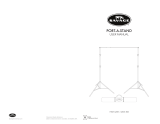 Savage 62037 User manual
Savage 62037 User manual
-
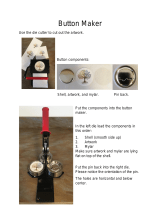 Mophorn Button Maker Operating instructions
Mophorn Button Maker Operating instructions
-
 UP Trango XC Owner Manual And Service Booklet
UP Trango XC Owner Manual And Service Booklet
-
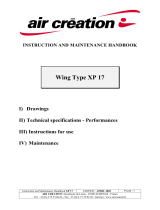 Air Creation XP 12 Instruction And Maintenance Handbook
Air Creation XP 12 Instruction And Maintenance Handbook
-
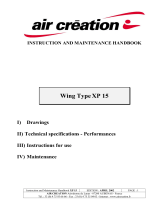 Air Creation XP 12 Instruction And Maintenance Handbook
Air Creation XP 12 Instruction And Maintenance Handbook
-
Bailey pproach SE Owner's manual
-
Bailey Approach User manual
-
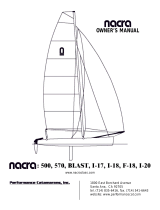 Nacra Blast Owner's manual
Nacra Blast Owner's manual
-
Petzl R02Y 300 Owner's manual




































